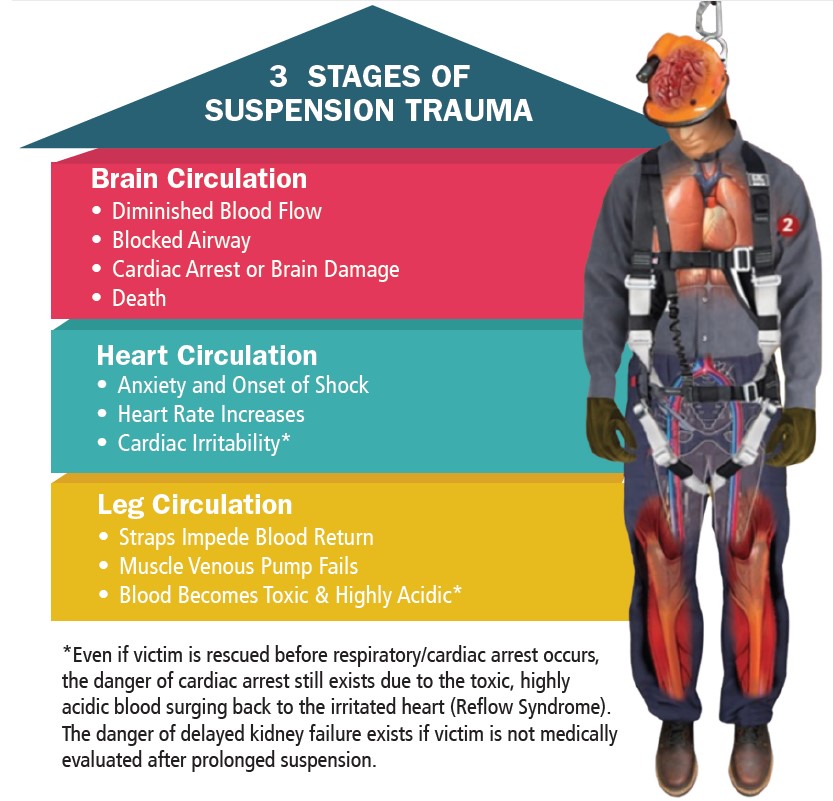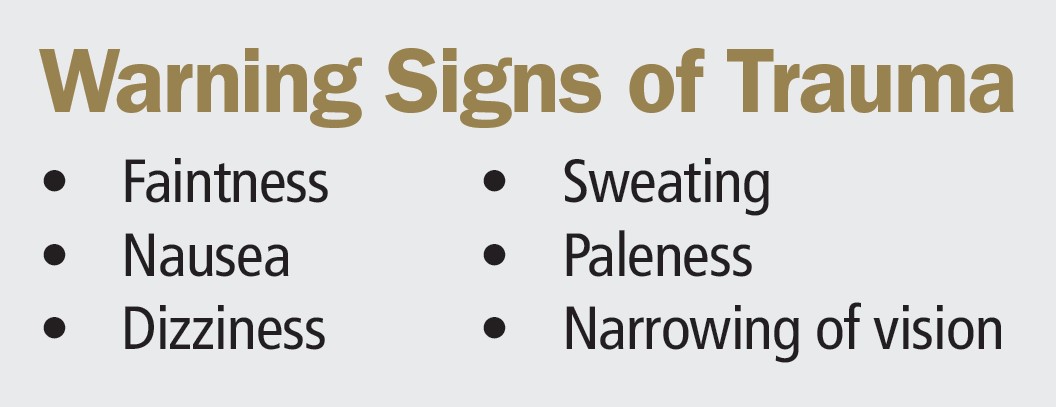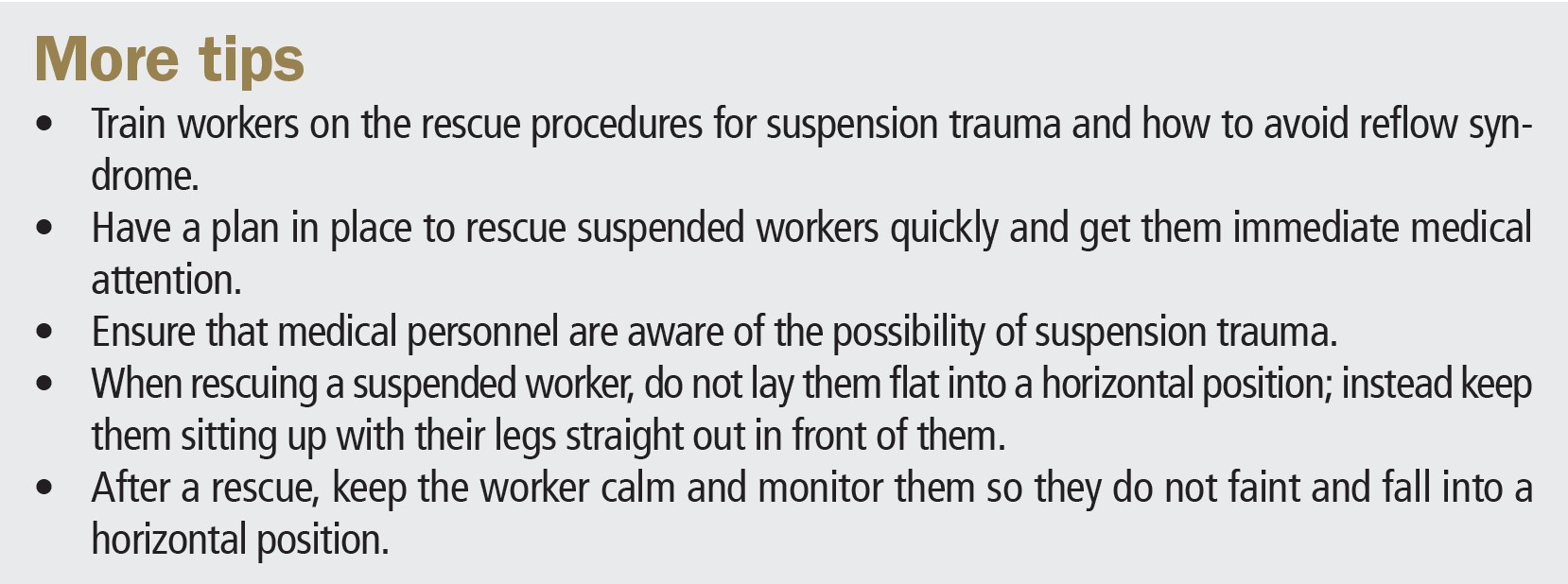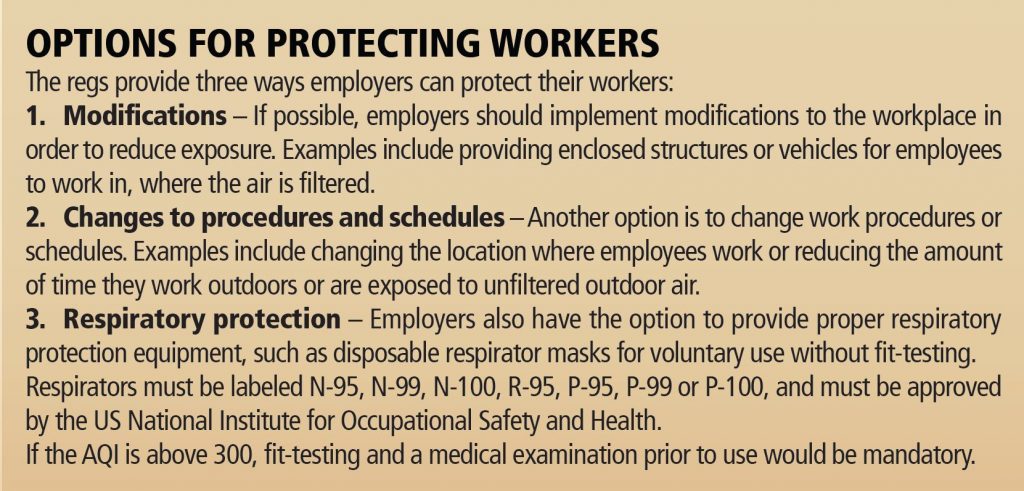July 2024 – Indoor Heat Illness Rules Coming Soon

THE CAL/OSHA Standards Board has voted to approve new heat illness prevention regulations that will require some workplaces to make significant adjustments to their operations in order to comply, possibly starting early this summer.
The vote has been challenged, and at the last minute, the California Department of Finance withdrew its approval of the regulatory changes due to a lack of full analysis on their potential financial impact on state entities, particularly state-operated correctional facilities.
However, Cal/OSHA is already in the process of creating a carveout for these entities to appease the Finance Department.
The indoor heat illness prevention standard applies to most indoor workplaces where the temperatures reach at least 82 degrees. According to Cal/OSHA, that includes facilities like warehouses, manufacturing and production facilities, greenhouses, wholesale and retail distribution centers, restaurant kitchens, and dry cleaners.
The rules
Applicable employers will need to create and maintain a written indoor heat illness prevention plan that includes the following:
82-degree trigger – When temperatures indoors reach this level, employers must:
• Have and maintain one or more cool-down areas when employees are present, which must be kept at a temperature below 82 degrees.
• Allow and encourage staff to take preventive cool-down rests in a cool-down area when they feel the need. They should be monitored for signs of heat illness during rests.
• Provide drinking water near the areas where employees are working.
• Observe all employees during heat waves when a workplace has no measures for controlling the effects of outdoor heat on indoor temperatures.
87-degree trigger – When the temperature exceeds 87 degrees, employers must measure the temperature and heat index, and identify all other environmental risk factors for heat illness. Firms must keep records of the temperature/heat index.
They must also implement control measures such as:
• Using air conditioners, swamp coolers, ventilation, or other measures to reduce the air temperature (engineering controls);
• Adjusting work procedures, practices, or schedules to minimize exposure to heat, such as changing shifts to start earlier and avoid the hottest parts of the day (administrative controls); or
• Using personal heat-protective equipment, such as water- or air-cooled garments or heat-reflective clothing.
Employers with affected workplaces must also observe new employees for 14 days when working under these conditions.
Emergency response – Employers must develop emergency response procedures, which must include:
• An effective communication system to allow workers to contact a supervisor or emergency services.
• Steps for responding to signs and symptoms of heat illness, including first aid and providing emergency medical services.
• Emergency response procedures for severe heat illness.
• Monitoring employees exhibiting signs of heat illness, and not leaving them alone without offering them onsite first aid or medical services.
Training – Employees and supervisors will need to be trained on:
• Personal risk factors for heat illness.
• Their employer’s procedures for complying with the regulations.
• The importance of frequent water consumption.
The takeaway
As mentioned, at this point there is no definitive date for these regulations taking effect, but Cal/OSHA insists they will be ready before summer starts in late June.
April 2024 – Workplace Safety – Overdose Meds May Be Coming to Your First Aid Kit

EFFORTS ARE afoot to create new laws and regulations that would require California employers to include the opioid overdose medication Narcan in their first aid kits. Cal/OSHA’s Standards Board has received a petition from a safety group asking it to create new regulations requiring workplaces to stock medications that can reverse opioid overdoses.
On the legislative front, two state assembly members have introduced bills that would require workplace first aid kits to include naloxone hydrochloride, the substance that can reverse overdoses.
More than 83,000 people died of an opioid overdose in 2022 in the U.S., including nearly 7,000 Californians, according to the Centers for Disease Control.
Naloxone, sold under the brand names Narcan and RiVive, is available in an over-the-counter nasal spray or as an injectable.
These medications temporarily reverse overdoses from prescription and illicit opioids, are not addictive, and are not harmful to people when administered.
In its Dec. 8 petition to Cal/OSHA’s Standards Board, the National Safety Council asked it to add naloxone to the list of required items in both construction sites as well as general industry workplaces.
“With the number of workplace overdose deaths on the rise, opioid overdose reversal medication is now an essential component of an adequate first-aid kit,” wrote Lorraine M. Martin, president and CEO of the NSC.
Legislation
Two bills are in play.
AB 1976: Authored by Assemblyman Matt Haney (D-San Francisco), this bill would require first aid kits on job sites to include Narcan. It would require the Standards Board to draft enabling regulations by Dec. 31, 2026.
AB 1996: Authored by Assemblyman Juan Alanis (D-Modesto), this measure would require operators of stadiums, concert venues and amusement parks to stock Narcan. It would not require Cal/OSHA to create new regulations as the measure is aimed at helping members of the public.
The takeaway
In light of the opioid overdose epidemic, more and more employers and operators of facilities that cater to the public have started stocking naloxone.
With opioid overdoses so prevalent in U.S. workplaces (18% in California alone), the simple addition of this over-the-counter medication can save the life of a worker.
Narcan is available for around $40 at most major retail pharmacies. It’s a simple and inexpensive addition to a first aid kit for any employer. It would be good practice to keep a pack in your safety kit… just in case.
Meanwhile, if any of the legislative and possible regulatory efforts become law or regulation, we’ll let you know.
January 2024 – Workers’ Compensation – Rules on First Aid Claims Reporting

THE CALIFORNIA Workers’ Compensation Uniform Statistical Reporting Plan requires that employers report small, medical-only first-aid claims to their insurance carrier.
Many employers fail to report these claims as they consider them too small since the worker doesn’t lose any time from work and they don’t have to go to a doctor. Under Rating Bureau rules, employers are required to report the cost of all claims for which any medical care is provided and medical costs are incurred — including those involving first aid treatment — even if the insurer did not make the payment.
The term “small medical-only claim” is also used to refer to first aid claims.
For workers’ comp purposes, that also means that the injured worker did not miss work because of the injury. Besides these rules, there is a very good reason for reporting these claims because what starts as a first aid claim can develop into a larger claim over time. At that point, if you never reported the claim in the first place, coverage issues may arise.
Additionally, any physician attending any injured employee must send copies of the Doctor’s First Report of Occupational Injury or Illness to the workers’ compensation insurance carrier or employer within five days of the initial examination. The insurer or employer must submit the physician’s report to the Department of Industrial Relations (DIR) within five days of receipt.
Penalties for non-compliance Any employer or physician who fails to comply with the submission of the Doctor’s First Report for first aid claims may be assessed a civil penalty of not less than $50 nor more than $200 by the DIR if a pattern or practice of violations or a willful violation is found.
FIRST AID CLAIM EXAMPLES
• Abrasions and cuts that require cleaning, flushing, or soaking.
• Using hot or cold therapy for a muscle injury.
• Drilling a fingernail to relieve pressure, or draining fluid from a blister.
• Removing foreign bodies from the eye using only irrigation or a cotton swab.
• Removing splinters or foreign material from areas other than the eye by irrigation, tweezers, cotton swabs, or other simple means.
July 2023 – Cal/OSHA Rule-Making – Indoor Heat Illness Prevention Standard on Tap

Cal OSHA has proposed its long-awaited indoor heat illness prevention standard as increasingly hot summers are affecting workers in indoor spaces like warehouses, production operations,
restaurants and more.
The proposed standard, largely based on the state agency’s outdoor regulations, will require employers whose workplaces at times are at least 82 degrees to have a written Indoor Heat Illness Prevention Plan.
The standard, once it takes effect, will affect employers throughout the state and many will have to take steps and invest in equipment and planning to ensure compliance. The preventative measure to which most employers will likely resort is air-conditioning.
The Standards Board wrote in its proposal, according to the Cal-OSHA Reporter trade publication: “There is likely to be a particular need to reduce temperatures in large warehouses, manufacturing and production facilities, greenhouses, and wholesale and retail distribution centers.”
Other facilities that would likely also need to install HVAC units include restaurant kitchens and dry cleaners. They may also need to improve air circulation in their operations.
Under the proposal, the following regulations apply to a workplace where the indoor temperature exceeds 82 degrees.
Access to drinking water
Employers are required to provide access to potable water that is fresh, suitably cool, and free of charge.
It must be located as close as practicable to the work area, as well as indoor cool-down areas where employees can rest. If an employer doesn’t provide water continuously, it will be required to provide at least one quart per hour per employee per shift.
Employers should encourage frequent water consumption.
Access to cool-down areas
Employers must provide at least one cool-down area during shifts, and grant a cool-down break to staff who ask for one.
Workers taking cool-down breaks shall be monitored and asked to stay in the area if they are experiencing heat illness symptoms. As long as symptoms persist, they may not be ordered back to the work they were doing.
Control measures
Employers can implement a number of measures to protect their workers:
Engineering controls – This can include barriers between heat sources and employees, isolating hot processes from workers, air-conditioning, cooling fans, mist fans, swamp coolers, ventilation, etc.
Administrative controls – This can include limiting exposure by adjusting work procedures, practices, or schedules (working during cooler periods, using work/rest schedules, or reducing the speed of work).
Personal heat-protective equipment – This could include water- and air-cooled garments, cooling vests, and more.
Emergency response procedures
Employers will need to develop and have in place emergency response procedures that workers and supervisors can follow in case they are experiencing heat illness.
Acclimation steps
Employees should be closely observed during heat waves, and new workers must be closely observed during their first 14 days of work to ensure they are acclimating.
Training
Employees and supervisors will need to be trained on:
- Personal risk factors for heat illness.
- Their employer’s procedures for complying with the regulation.
- The importance of frequent water consumption.
- The importance of acclimation.
- Signs and symptoms of heat illness, and first aid or emergency response procedures.
April 2023 – Workplace Safety – Construction Falls and the Perils of Suspension Trauma

ONE OF THE most common construction industry accidents is falls from heights, which is why it’s crucial that you have in place fall protection systems for your workers.
One of the best ways to prevent injuries and death from falls is by using a fall-arrest system. But while these systems can save lives, they can cause suspension trauma if the worker is not rescued and brought to ground level as soon as possible and is instead left suspended in an upright position, with their legs dangling.
Because the worker is suspended in an upright position with their legs hanging, blood begins to accumulate in the legs.
This is commonly called venous pooling (the accumulation of too much blood in the veins), which reduces the flow of oxygenated blood to the heart and brain.
Remaining in this position for a long time can cause the worker to pass out and the longer they hang in place, the more it can result in serious health problems – and even death.

How to avoid suspension trauma Safe, prompt rescue is the key to preventing suspension trauma. The sooner a worker can be rescued, the less likely they are to endure such trauma.
During the rescue, care should be taken to slowly put the victim back on the ground. Try to avoid suddenly letting them into a horizontal position, which can cause deoxygenated blood to flow back into the body (reflow syndrome) and cause damage to the brain and other organs – and even cause the heart to stop.
Suspended workers awaiting rescue can take some action to guard against injury, including:
- Adopting a sitting position, if possible.
- Moving into a horizontal position as much as possible.
- Using their legs to push off from a hard surface, keeping the muscles active.
- Pumping legs frequently to maintain blood flow and prevent venous pooling.
One of the primary ways to slow the progression of suspension trauma is to stand up. When standing, the leg muscles must contract to provide support and maintain balance and these actions also put pressure on the veins. This pressure, along with a series of one-way valves in the veins, helps blood get to the heart and reduces the amount of blood pooling in the legs.
Workers can “stand” by using the trauma-relief straps that are attached in pouches on the side of the fall-arrest harness. When suspended, the worker can deploy the trauma-relief straps, which provide a loop that they can put their feet into and press against to simulate standing up.


January 2023 – Top 10 California Laws, Regs for 2023

A slew of new laws and regulations that will affect California businesses are taking effect for 2023.
Last year was a busy one, with ground-breaking new laws on employee pay disclosures, a law prohibiting discrimination against cannabis-using employees and another expanding the circumstances when employees can take leave to care for a loved one. The following are the top 10 laws and regulations that employers in the Golden State need to stay on top of.
1. Pay disclosure
This sweeping law in part requires more disclosure of pay information by employers. Under current law, employers are required to provide the pay scale for a position upon reasonable request by a job applicant. SB 1162 goes a step further by:
- Requiring employers, upon request by a current employee, to provide the pay scale of the position they are employed in.
- Requiring employers with 15 or more workers to include pay scale in any job postings for open positions.
- Requiring employers to maintain records of job titles and wage rate history for each employee while employed for the company, as well as three years after their employment ceases.
Note: The law defines “pay scale” as the salary or hourly wage range that the employer “reasonably expects” to pay for the position. Penalties range from $100 to $10,000 per violation. This law took effect Jan. 1, 2023.
2. State of emergency and staff
This new law, SB 1044, bars an employer, in the event of a state of emergency or emergency condition, from taking or threatening adverse action against workers who refuse to report to, or leave, a workplace because they feel unsafe. “Emergency condition” is defined as:
- Conditions of disaster or extreme peril to the safety of persons or property caused by natural forces or a criminal act.
- An order to evacuate a workplace, worksite or worker’s home, or the school of a worker’s child due to a natural disaster or a criminal act.
SB 1044 also bars employers from preventing employees from using their mobile phones to seek emergency assistance, assess the safety of the situation or communicate with another person to confirm their safety. The law, which took effect Jan. 1, 2023, does not cover first responders and health care workers.
3. Cannabis use and discrimination
This law bars employers from discriminating in hiring, termination or other conditions of employment based on employees using cannabis while off duty. The bill’s author says the legislation is necessary because THC (tetrahydrocannabinol), the active ingredient in marijuana, can stay in a person’s system after they are no longer impaired. As a result, drug testing may detect THC in an employee’s system even if they used it weeks earlier and it is having no effect on their job performance. AB 2188 does not require employers to permit employees to be high while working. The bill would exempt construction trade employees and would not preempt state or federal laws that require employees to submit to drug testing. This law takes effect Jan. 1, 2024.
4. Leaves of absence
The California Family Rights Act and the state’s paid sick leave law allow employees to take leave to care for a family member, defined as a spouse, registered domestic partner, child, parent, parent-in-law, grandparent, grandchild or sibling. The definition has been expanded to include “any individual related by blood or whose association with the employee is equivalent of a family relationship.”
5. Contractor workers’ comp
Starting July 1, the following contractors must carry workers’ compensation coverage regardless of if they have employees or not:
- Concrete (C-8 license)
- Heating and air conditioning (C-20)
- Asbestos abatement (C-22), and
- Tree service (D-49).
Starting Jan. 1, 2026, all licensed contractors must have coverage.
6. OSHA citation postings
Under current law, employers that receive citations and orders from OSHA are required to post them in or near the place the violation occurred, in order to warn employees about a potential hazard. Starting Jan. 1, 2023, they must post the notice not only in English, but also: Spanish, Chinese (Cantonese, Mandarin), Vietnamese, Tagalog, Korean, Armenian and Punjabi.
7. Permanent COVID standard
Cal/OSHA has a permanent COVID-19 prevention standard that will sunset in 2024. The new standard, which replaces the temporary emergency standard the agency had implemented, should provide more certainty for prevention procedures and practices. Here are the main takeaways:
- Employers are no longer required to pay employees while they are excluded from work due to COVID-19, or to screen employees daily.
- Employers must still notify and provide paid testing to employees who had a close contact in the workplace.
- Employers can now incorporate written COVID-19 procedures into their Injury and Illness Prevention Programs.
8. CalSavers expanded
SB 1126 requires any person or entity with at least one employee to either provide them with access to a retirement program like a 401(k) plan or enroll them in the state-run CalSavers program. Prior to this new law only companies with five or more employees that do not offer a retirement plan are required to enroll their workers in CalSavers.
9. Bereavement leave
Employers with five or more workers are required to provide up to five days of bereavement leave upon the death of a family member, under a new law starting in 2023. This leave may be unpaid, but the law allows workers to use existing paid leave available to them, such as accrued vacation days, paid time off or sick leave. Employers are authorized to require documentation to support the request for leave.
10. PFL wage replacement
This law was passed last year but does not take effect until 2025. Existing California law allows employees to apply for Paid Family Leave and State Disability Insurance, both of which provide partial wage replacement benefits when employees take time off work for various reasons under the California Family Rights Act. Starting in 2025, low-wage earners (those who earn up to 70% of the state average quarterly wage) will be eligible for a higher percentage of their regular wages under the state’s PFL and SDI benefit programs.
October 2021 – WORKPLACE SAFETY- Permanent COVID-19 Standard Coming Soon

CAL/OSHA has taken the first step towards creating a semi-permanent COVID-19 standard to replace the emergency temporary standard that currently governs workplace coronavirus prevention measures in the state.
On Sept. 17, Cal/OSHA released a discussion draft for permanent COVID-19 regulations to give stakeholders the chance to comment on it before it starts work on writing the regs. Even though they are “permanent,” the rules would be subject to renewal after two years from the effective date or they would expire if the threat has receded by that time.
Elements of the draft standard
Here’s what the draft standard would do:
Follow CDPH rules – Required that employers follow California Department of Public Health COVID-19 prevention orders.
Masks for unvaxxed staff – Unvaccinated staff must wear masks. Employers must provide masks when the CDPH requires them.
Outbreak rules – During an outbreak in the workplace, all staff would be required to wear face coverings regardless of vaccination status. Employers would need to provide respirators during major outbreaks to all employees.
No COVID-19 Prevention Plan – Employers would not need to have a COVID-19 Prevention Plan, as required in the temporary emergency standard. Instead, they would be required to address COVID-19 prevention strategies in their Injury and Illness Prevention Plan.
Masks for at-risk staff – Require employers to provide N95 respirators to employees who have been identified by a doctor as being at increased risk of severe illness from COVID-19, regardless of their vaccination status.
‘Fully vaccinated’ defined – Define a “fully vaccinated employee” to mean that the employer has a copy of their vaccination record that includes the vaccine maker and date of the last dose.
Retaining records – Require employers to keep COVID-19 vaccination records for two years after the period requiring them to keep the records ends. That means if the rule sunsets in a few years, employers would be required to keep those records for another two years.
Testing rules – Require that employers provide COVID-19 testing to all employees who have come into close contact with another team member who has tested positive for the virus. Testing must be provided at no cost to the employee.
No paid leave for infected staff – Eliminate the provision for paid leave for workers who contract the coronavirus.
Handwashing and cleaning – Eliminate rules regarding handwashing and cleaning and disinfecting procedures in the workplace.
The takeaway
If you have been following Cal/OSHA’s emergency temporary standard, you should continue to follow the current requirements. The new rules simplify the emergency standard, particularly concerning the requirement that COVID-19 prevention plans can be included in your IIPP rather than in a separate document.
July 2021 – Masks for Vaccinated Staff No Longer Required

THE CAL/OSHA Standards Board has approved changes to the COVID-19 Emergency Temporary Standard that greatly loosen workplace restrictions that were implemented last year to protect California workers.
The biggest news in the changes is that workers who have been fully vaccinated are no longer required to wear face masks as protection or physically distance, regardless of the vaccination status of co-workers.
After the decision, Gov. Gavin Newsom issued an executive order enabling the revisions to take effect without the normal 10-day approval period by the state Office of Administrative Law. They came into effect when the office received the changes.
The main changes Here are the main changes affecting employers in California:
Physical distancing and barrier requirements – These are eliminated regardless of an employee’s vaccination status, except where an employer determines there is a hazard and for certain employees during major outbreaks.
Testing – Fully vaccinated employees do not need to be offered testing or be excluded from work after close contact with someone who has COVID-19, unless they have symptoms. Employees who are not fully vaccinated and exhibit COVID-19 symptoms must be offered testing by their employer.
Masks – Vaccinated workers are not required to wear face masks generally. For unvaccinated workers, masks will be required indoors or when in vehicles, with limited exceptions.
Employees are not required to wear face coverings when outdoors regardless of vaccination status, except for certain employees during outbreaks.
Document vaccination status
– Employers must document the vaccination status of fully vaccinated employees if they do not wear face coverings indoors.
No mask retaliation – Employees that choose to, are explicitly allowed to wear a face-covering without fear of retaliation from employers.
Respirator availability – Employees who are not fully vaccinated may request respirators for voluntary use from their employers at no cost and without fear of retaliation from their employers.
Businesses that need help in securing N95 respirators for unvaccinated employees can find distribution locations for state-provided N95 respirators here.
Review rules – Review the Interim Guidance for Ventilation, Filtration, and Air Quality in Indoor Environments.
Ventilation – Employers must evaluate ventilation systems to maximize outdoor air and increase filtration efficiency, and must evaluate the use of additional air cleaning systems.
What remains
Parts of the Emergency Standard still in effect include:
• Employers must maintain an effective written COVID-19 Prevention Program that includes:
» Identifying and evaluating your employees’ exposures to COVID-19 health hazards.
» Implementing effective policies and procedures to correct unsafe and unhealthy conditions.
» Allowing adequate time for handwashing and cleaning frequently touched surfaces and objects.
• Employers must provide training to employees on how COVID-19 is spread, infection-prevention techniques, and information regarding COVID-19-related benefits that affected employees may be entitled to under state or federal laws.
• Employers must bar from coming to work employees who have COVID-19 symptoms and/or are not fully vaccinated and have had close contact from the workplace if that close contact is work-related.
Cal/OSHA Rulemaking – Permanent Wildfire Safety Rules on Tap – OCTOBER 2020

AS WILDFIRES continue raging throughout California, Cal/OSHA has issued a reminder to employers that they are required to protect their outdoor workers from smoke if the Air Quality Index exceeds 150. Cal/OSHA has extended an emergency regulation it put in place in August 2019 through January 2021 as it works on a permanent regulation on wildfire smoke protection for outdoor workers in the state.
For the safety of your workers and to comply with the regulation, it’s important that you follow the regs and know when you will need to take action to protect them from outdoor smoke.
The regulation applies when the AQI for airborne particulate matter 2.5 microns (PM2.5) or smaller is 151 or greater in an area where employees are working outdoors. Here are the details:
Identification
Employers must monitor the AQI for PM2.5. You can monitor the index using the following websites:
- U.S. EPA AirNow
- U.S. Forest Service Wildland Air Quality Response Program
- California Air Resources Board
- Local air pollution control district websites or local air quality management district websites.
Training and instruction
Employers with outdoor workers need train their workers in:
- The health effects of wildfire smoke.
- Their right to obtain medical treatment without fear of reprisal.
- How they can obtain the current AQI for PM2.5.
- Actions they must take if the AQI exceeds 150 PM 2.5
Communication
Employers must implement a system for communicating wildfire smoke hazards to all affected employees, as well as a system for employees to inform the employer of smoke hazards.

The takeaway
If you have outside employees who may have to work in smoky conditions, you should stockpile a two-week supply of N-95 masks for all of them if you are unable to implement other controls to reduce their exposure.
Cal/OSHA is in the process of making the emergency rules permanent and has sent them out for public comment. We will continue monitoring the agency’s progress on the rules and update you when they have been completed.
Pandemic Transition – How to Reopen, Bring Staff Back to Work Safely – July 2020

IF YOUR business is reopening after a relaxation of shelter-in-place orders, you should proceed with caution and make sure you have safeguards in place to protect your workers, as well as customers if they are entering your premises.
Here are some recommendations from the Los Angeles Department of Public Health and other sources that can apply to any municipality anywhere in the country.
Measures to protect employees
• If someone can continue working from home, let them do so.
• Tell employees not to come to work if sick.
• If any employee tests positive for, or has symptoms that are consistent with COVID-19, you should:
– Ask that they isolate at home, and
– Ask all employees who may have come in contact with that colleague to immediately self-quarantine at home.
• Check employees for symptoms or a fever before they enter. This must include a check-in concerning cough, shortness of breath or fever, and any other symptoms the employee may be experiencing.
• These checks can be done remotely or in-person upon the employee’s arrival. A temperature check should be done at the worksite, if feasible.
• Offer at no cost to your employees cloth face coverings if they are going to have contact with the public during their shift. If they are disposable, masks should be thrown away at the end of every shift. If they are reusable, they should be washed after every shift in hot water.
• Instruct employees not to touch their masks.
• Disinfect break rooms, restrooms, and common areas frequently.
• Place hand sanitizer in strategic locations.
• Allow employees to take frequent breaks to wash their hands.
Signage
Place signs at each public entrance of your facility to inform all employees and customers that they should:
• Avoid entering if they have a cough or fever.
• Maintain a minimum 6-foot distance from one another.
• Wear a mask for their own protection, as well as for the safety of others.
Controlling crowds, lines
Limit the number of customers on the premises at any one time, to allow customers and employees to easily maintain at least 6-foot distance from one another at all practicable times. Post an employee at the door to ensure the maximum number of customers in the facility is not exceeded. If people are queueing up, mark the ground outside to ensure proper social distancing.
Spacing between employees
• Require employees to work at least 6 feet apart. You may need to reorganize workspaces to ensure proper spacing.
• In jobs where workers are on their feet, mark spots on the floor where they should stand to ensure social distancing.
• Space out tables, chairs, and microwaves in break rooms.
• Another option is to use partitions made of plexiglass so workers can communicate and make eye contact.
• In addition, you may want to abandon the popular open workspace concept and revert to using cubicles, which gained popularity in the 1980s and 1990s as a way to increase productivity by putting barriers between office workers. Having that divider will make your staff feel safer and can offer some protection.
• Reconfigure furniture placement in offices, public seating areas, and other work areas to support physical distancing.
Cleaning and circulation
Take steps to minimize air from fans blowing from one worker directly at another. Also, consider opening windows for circulation.
Also important are:
• Disinfecting surfaces in workspaces, as well as doorknobs, buttons, and controls. Pay special attention to areas that are frequented and touched more often.
• Providing workers and customers with tissues and trash receptacles.
• Employees who are cleaning and disinfecting should wear disposable gloves.
• Cleaning surfaces using soap and water, then using a disinfectant.
• Sanitizing any other personal protective equipment such as hardhats after every shift.














